
Allison and I recently booked a trip to Spain based largely on the price of the airplane tickets. I found the deal, did a quick internet search to confirm that yes, Spain does indeed have birds, and then pulled the trigger. It is fair to say that it was the best impulse buy of my lifetime. Spain offered us an astonishingly beautiful countryside, ancient ruins, stunning architecture, a gracious and accommodating people, excellent food, affordable hotels, and great birds. I cannot recommend Spain highly enough for those interested in a trip that weaves birding into cultural tourism.
The success of our trip hinged upon some fairly extensive planning combined with good luck in the form of several friends who provided excellent advice on travelling and birding in Spain. I’m sharing our itinerary and some photos here in the hope that it proves useful to people like Allison and me, who are ready to sacrifice a few lifers in the name of old cathedrals, new food, and long cocktail hours. We recorded 102 species – a dedicated birder would surely end up with substantially more.
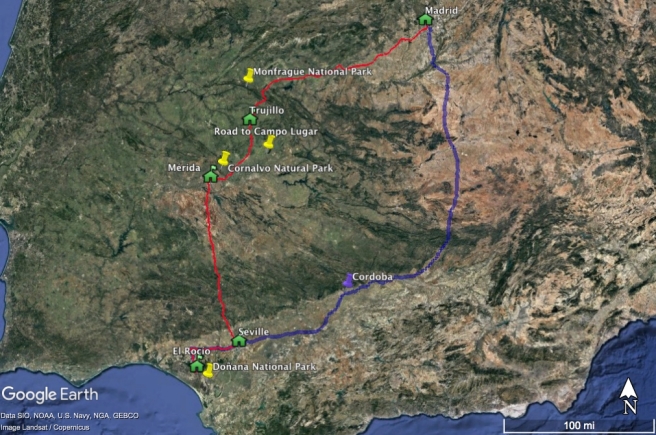
Our trip began in Madrid and ended in El Rocío on the southern coast of Spain. We drove straight back to Madrid so we could meet up with an old friend. Otherwise we would have returned through Cordoba, where the nearby mountains would have probably offered offer new birds and new landscapes. We spent 8 total days in the country and would have been smart to add 1-2 additional days to complete the circuit and perhaps spend more time in and near Trujillo. There are many good choices for traveling and birding in Spain and I don’t pretend to know more than a small fraction of them. We chose southern Spain based on old Professor Google, and we chose specific birding sites based on an oddly arranged but indispensable guidebook.
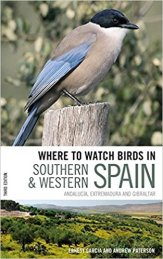
Here’s what we did:
Madrid: Our original plan was to visit the Royal Palace, but it was closed that day. We briefly applied our American education to identifying all the statues (“Who’s that?” “Christopher Columbus.” “How about that one?” “Also Columbus.”) in the plaza before wandering down to the King’s old hunting grounds, a 4,300 acre park named Casa de Campo, to find some birds. The park was gorgeous and gave us a good start on our trip list, but our Spanish friend laughed at us when we recounted the day and said she was surprised we still had our binoculars because she’d expect them to have been stolen by a thief or an indignant prostitute. So tip #1: maybe don’t go to Casa de Campo.
Trujillo: On the way out of Madrid we encountered our first castle, which Allison thought was some kind of cheap tourist trap. No – it was an actual castle.
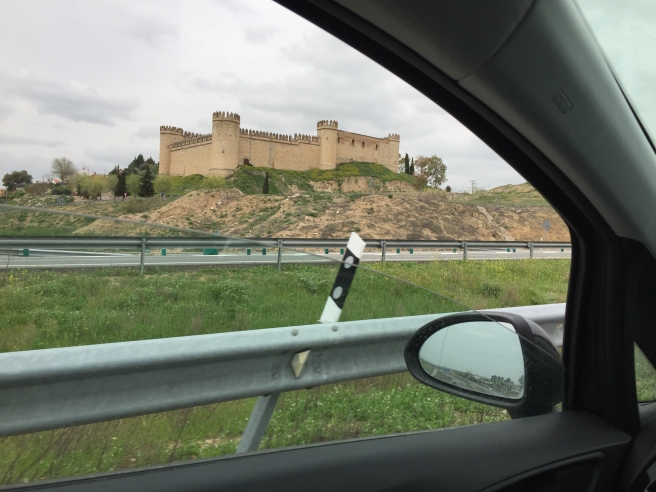
We stayed in the Palacio Santa Marta, a converted 16th century palace and one of two hotels I would explicitly recommend for the opportunity to bird from your window with a 15th century cathedral in the background. Earlier in the day we visited Monfragüe National Park, a must see that offers a river cutting through rock faces that house nesting vultures, eagles, and many other species.
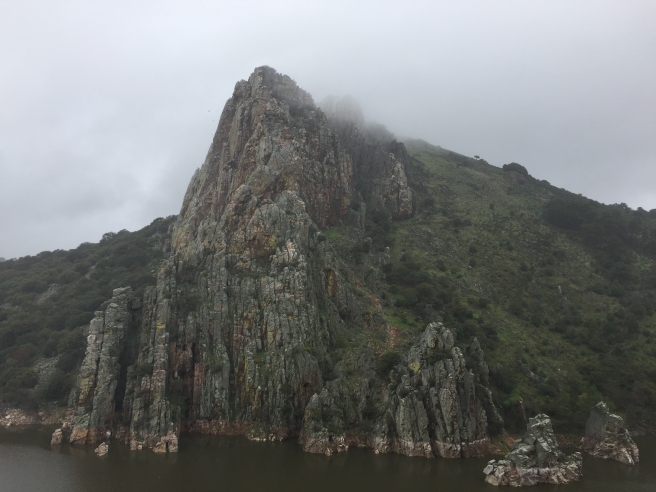
Bonus: The park has a 9th century castle sitting high above the river, the road to which we foolishly walked. A Spanish couple took pity on us and drove us back down because the shuttle driver had ceased operation during the typical 3-hour Spanish siesta.
Merída: We intended to leave Trujillo bright and early but got waylaid because someone (that would be me) forgot to set the alarm. On our way to Merída we birded the road that leads east out of a small town called Campo Lugar, which offered Great Bustards and other grassland birds.
We also stopped by Cornalvo Natural Park, which offered some gorgeous scenery (Spain is fully in bloom in April) and a variety of woodland birds.
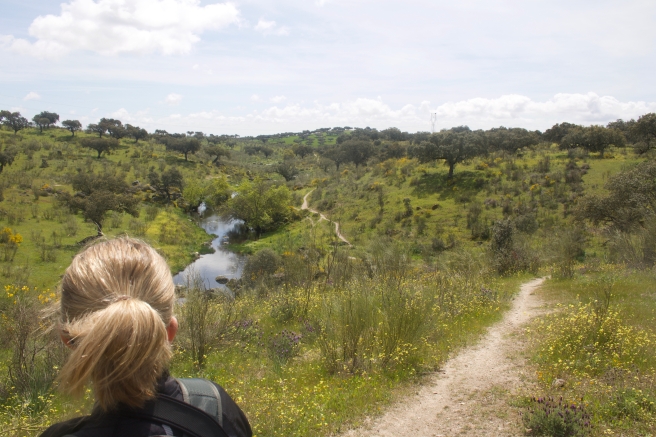
Merída houses a number of pre-Christ Roman ruins, which were a real highlight of the trip. For reasons unknown there was just a small handful of tourists in the amphitheatre, where 2,000 years prior gladiators were busy hacking lions and/or each other to bits. The adjacent Roman theater was also empty, giving each an intimate feel that really added to the experience. At one point I found myself alone, ducking through an ancient tunnel, dragging my fingers across ancient stone blocks, water dripping through the ceiling onto the muddy path. No docent lecturing me about acid in the oils in my fingers posing an existential threat to the sanctity of the site, no over-friendly Texan telling me about the ruins I really should visit. It was wonderful.
Seville: Parking the car in Seville was a time-consuming adventure that left me needing a bathroom, which ironically could only occur once I bought a beer, which left me needing a bathroom. But I resisted the second urge and we hit the city’s famous cathedral. We entered the building and it was so awe-inspiring I felt momentarily religious. Turns out we were in a side chapel of sorts, a kind of warm up to the main event. We found the line for the actual cathedral and after some pushing and shoving found our way in. It’s impossible to imagine what someone in the 1500’s must have felt walking into such grandeur. We visited Columbus’s tomb (“No, this time it is actually Columbus”), climbed the tower, and generally walked around wide-eyed, acknowledging the greatness of the place.
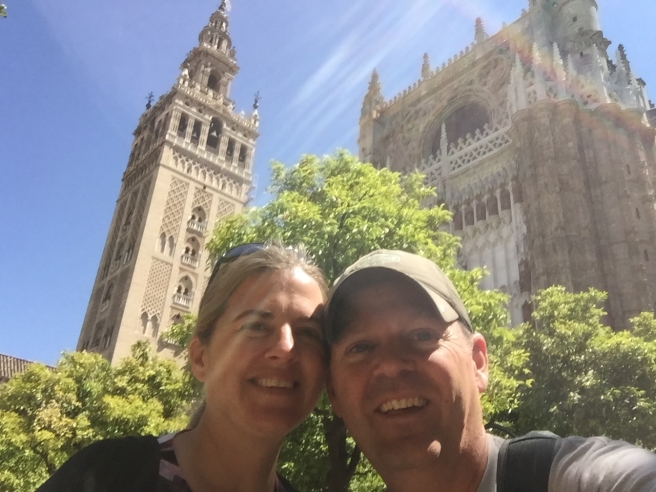
The next morning we visited the 8th century Muslim turned Christian Alcázar Palace, the intricate carvings of which were only slightly sullied by the crowds and the anti-Semitic tour guide who spent entirely too much time talking about prostitutes and Columbus’s affection for Jewish bankers.
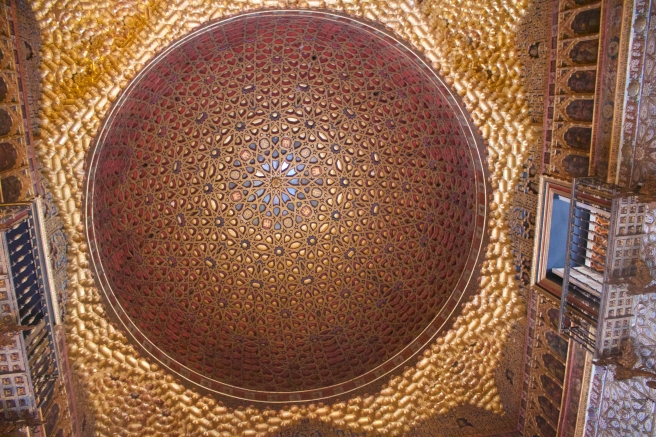
We ended our stay in Seville with a trip to the Plaza, which at 90-years old is Seville’s newest architectural masterpiece. It’s hard to imagine that kind of government building being erected in the States. Birds were scarce in Seville, but for the real nerds out there we got a clear view of common versus pallid swifts from the hotel roof.
El Rocío: The second hotel room I explicitly recommend: the junior suite at La Malvasía. There is no senior suite – this is the best hotel room in the dusty town that borders a lagoon full of feral horses and wetland birds.
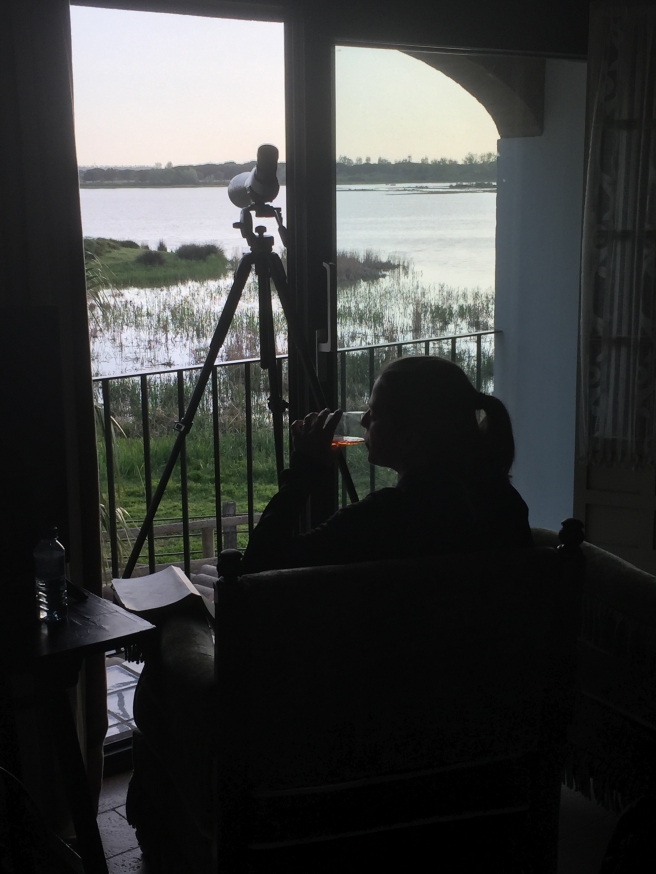
A million pilgrims descend upon El Rocío each May for a brief festival, which means that the remaining 11 months offer up a populace totally prepared to make your visit a good one. The food was excellent and inexpensive. Doñana National Park (the crown jewel of the country’s birding locales) did not disappoint and offered up flamingoes, grebes, lapwings, deer, boar, dead horses, you name it. Access is limited so we got a guide for a trip in the northern side of the park, which was completely worth the 35 euros per person. The following day we birded the visitors’ center south of El Rocío, which offered a fantastic boardwalk hike through wetlands, scrub, and pine woodlands. It was a good place to pick up migrant passerines, bee eaters, and about 100 little grebes. We ended the day with a brief trip to the beach, where our appreciation of the impressive dune system was somewhat muted by the howling winds. I did see one nude sunbather braving the day – apparently Europeans are used to 30+ mph gusts.
What a trip. A few final thoughts:
- April is the right time to go. The weather is usually great, the flowers are blooming, and just about every bird is either singing its heart out or building a nest. The Spaniards we talked to were perplexed as to why more people don’t visit in April before it gets too hot and the green turns to brown.
- Spanish time is a real thing. Expect to eat lunch around 2:00 and dinner no earlier than 9:00.
- Tapas and house wine is both the affordable and the right choice. You can eat and drink for a song and the tapas of southern Spain cannot be beat if you are into simple, flavorful foods.





